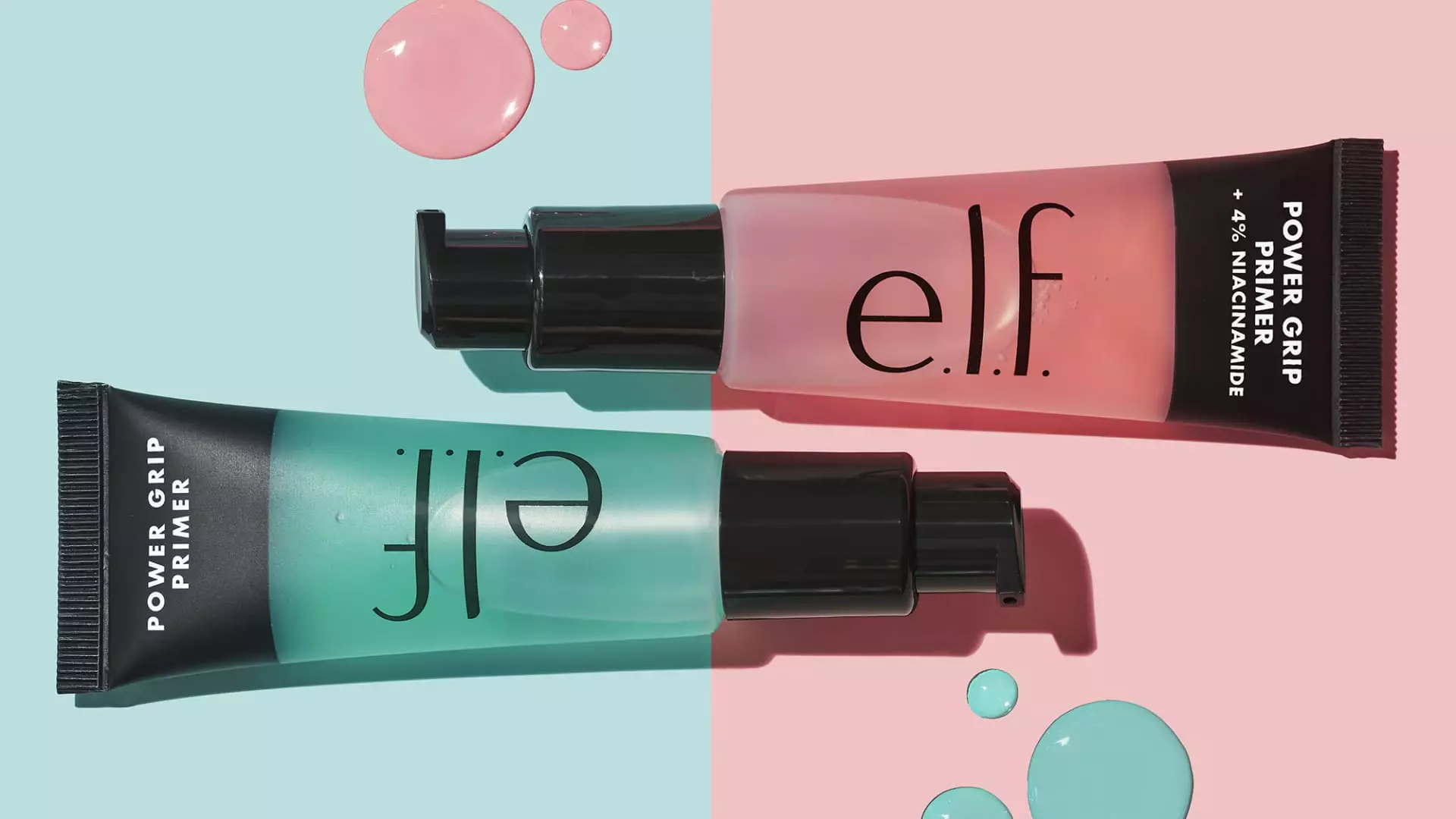E.l.f. Beauty recently made headlines in the cosmetics industry when it announced a remarkable 40% increase in sales for the second fiscal quarter, reaching $301 million. This surge in revenue far exceeded the expectations of market analysts, igniting a near 10% hike in the company’s stock during after-hours trading. Furthermore, the company revised its full-year revenue outlook, projecting sales between $1.32 billion and $1.34 billion for the fiscal year of 2025—numbers that trump the earlier consensus of $1.30 billion. The strong performance reflects a robust market presence and an effective business strategy aimed at reaping gains from various consumer segments.
E.l.f.’s financial metrics painted a promising picture for investors and stakeholders alike. The adjusted earnings per share (EPS) hit 77 cents, dwarfed by the 43 cents that analysts had anticipated. While the net income for the quarter dropped to $19 million—down from $33 million a year prior—this decline has not deterred investor confidence. Notably, the company’s move to raise its adjusted earnings guidance from between $3.36 and $3.41 per share to a range of $3.47 to $3.53 showcases its confidence in maintaining a sustainable growth trajectory.
Furthermore, the boost in gross margin to an impressive 71% reflects E.l.f.’s adeptness in managing costs while providing quality products at competitive price points. Enhancements in foreign exchange rates and previously implemented price hikes have contributed favorably to this margin, pointing towards a well-orchestrated pricing strategy that aligns both value and quality.
E.l.f. Beauty’s rise can be attributed to its innovative approach to marketing and its ability to cater to a broad consumer base. The company has become particularly popular among younger generations, boasting the title of the leading brand among Gen Z by a significant margin. CEO Tarang Amin notes that this appeal extends beyond just one age group; the brand has also captured the attention of Gen Alpha and millennials, indicating a multi-generational buy-in that speaks to the quality and accessibility of their products.
The expansion of retail partnerships has significantly buoyed E.l.f.’s visibility. Retail giants like Target and Walgreens are preparing to increase shelf space for the brand, illustrating a recognition of E.l.f.’s growth potential. Such partnerships not only enhance customer access but also fortify the company’s position in an increasingly competitive market.
Despite its success, E.l.f. faces challenges typical in the retail landscape, particularly around rising operational costs. Selling, general, and administrative expenses surged to $186.1 million, representing 62% of net sales. However, E.l.f. managed to maintain a favorable gross margin through strategic innovations in its product mix, which Amine credits as a key driver in improving overall profitability. The company’s focus on offering high-quality products at relatively low prices ensures that it remains attractive to cost-conscious consumers while still appealing to those seeking prestige offerings.
Furthermore, the growing segment of international sales, now accounting for around 21% of total revenue, underlines the brand’s strategy to mitigate risks associated with potential domestic market fluctuations. Expanding into global territories not only diversifies E.l.f.’s revenue streams but also serves as a buffer against geopolitical uncertainties that may arise in the future.
E.l.f. Beauty’s trajectory shows no signs of slowing down, with a potent combination of solid earnings growth, brand loyalty across generations, and a strategic approach to marketplace expansion. As the company focuses on innovation and further tapping into international markets, it positions itself solidly for sustained future growth. Investors and stakeholders can be optimistic about E.l.f.’s strategy of blending quality with value, ensuring that it remains a relevant player in the dynamic cosmetics industry as it navigates the complexities of both the domestic and international landscapes.

